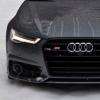Search the Community
Showing results for tags 'lta'.
-
20 single-deck electric buses each from BYD and ST Engineering Land Systems 10 single-deck and 10 double-deck electric buses from Yutong The buses will progressively arrive in Singapore from next year, with the final batch delivered in 2020 Source: The Straits Times
-
https://www.straitstimes.com/singapore/courts-crime/4-drivers-convicted-of-providing-illegal-chauffeured-services-using Huat ah!!! SINGAPORE - Four drivers have been fined for providing illegal chauffeured services using unlicensed vehicles, the Land Transport Authority (LTA) said in a statement on Wednesday (Feb 13). The drivers have each been convicted of using a vehicle as an unlicensed public service vehicle, and driving a vehicle without valid insurance. They were each fined a total of $1,400 and disqualifed from driving all classes of vehicles for 12 months. LTA said that three of the four vehicles used were forfeited in 2018, while the decision over the fourth vehicle is still pending. All four vehicles were foreign-registered vehicles. In all four cases, investigations revealed that the drivers had ferried passengers from Singapore to Johor Bahru for an agreed fare without a Public Service Vehicle Licence (PSVL). In 2018, LTA caught 13 drivers using unlicensed foreign-registered vehicles to provide chauffeured services. Enforcement operations were conducted at visitor hot spots such as Changi Airport, HarbourFront Centre and East Coast Seafood Centre, LTA said. Deterrence operations were also conducted at these locations through the uniformed presence of LTA enforcement officers. LTA urged members of the public against engaging chauffeured services provided by persons using unlicensed vehicles, as these vehicles might not be sufficiently insured against third-party liabilities. Passengers may not be entitled to insurance recourse if they are involved in a traffic accident while travelling in such vehicles, the authority added. LTA group director of traffic and road operations Chandrasekar Palanisamy said: "Our enforcement officers have cracked down on these unlicensed public service vehicles to protect our commuters and our drivers." "We work closely with various agencies to obtain the information and investigate these incidents," he added. "LTA views these infringements seriously, and we are committed to taking severe action against offenders." Under the Road Traffic Act, all vehicles, including foreign-registered ones, are not allowed to provide taxi or chauffeured services in Singapore without a valid PSVL. Any person caught using a vehicle that is not issued with a valid PSVL to provide taxi or chauffeured services shall be prosecuted, LTA said. Those convicted face a fine of up to $3,000, or a jail term not exceeding six months, or both. The vehicle used may also be forfeited.
-
-
Lai lai...scholars asking wor https://www.straitstimes.com/singapore/transport/lta-seeks-solutions-to-improve-road-maintenance-regime-and-road-construction-methods
- 384 replies
-
- 11
-

-
.png)
-
Source: https://mothership.sg/2025/05/tuk-tuks-singapore-cemetary-vehicles-seized/ Several auto-rickshaws, commonly known as "tuk-tuks", found at the parking lots and by the roadside near Lim Chu Kang Muslim Cemetery, have been seized by the Land Transport Authority (LTA) for investigation after reports were lodged. Shin Min Daily News reported that the auto-rickshaws were spotted outside the cemetery with no licence plates and are believed to be unregistered. Passers-by said they were worried the riders might drive the auto-rickshaws recklessly and affect public safety. Auto-rickshaws seen in cemetery since 2020 When a reporter from the Chinese news outlet visited the cemetery on May 13, they observed four or five such vehicles. Those working in the vicinity revealed that the vehicles belonged to the workers there. A 66-year-old cemetery worker said he has seen many such auto-rickshaws in the cemetery since 2020, saying that the owners are often workers who make tombstones in the cemetery. He explained that some people may find trucks too expensive, so they use auto-rickshaws as replacements to carry around the needed materials. He added that the riders usually use the tricycle on the small roads within the cemetery. A "tuk-tuk" owner, 60, told reporters that he has lived nearby since he was a child, and his father and brother had also worked in the cemetery before. He would do jobs around the area, including laying lawns, mowing grass, and cleaning graves. The 60-year-old would use his vehicle to carry around his work tools, which were not light, as he had a leg injury and could not walk for long durations. The worker bought the vehicle three years ago, where he would usually park it in the cemetery and never drive it out of the area. He added that other workers had similar auto-rickshaws, and he had yet to receive any complaints about it. Another "tuk-tuk" owner said he spent S$3,800 to buy the vehicle from China, which is powered using solar panels and did not need to be charged. On cloudy days, the backup battery can be used to power the vehicle for three to four days. He added that there were around 10 such rickshaws in the area, and all believed to have been imported from China. LTA seized the auto-rickshaws LTA told Shin Min that they have taken enforcement action and seized the vehicles. The authorities noted that the vehicles were not approved for use and are currently being held for investigation, adding that all vehicles must be approved and meet registration requirements before they can be used on the road.
- 229 replies
-
- 2
-

-
.png)
-
Source: https://www.straitstimes.com/singapore/transport/lta-tweaks-calculation-of-commercial-vehicle-coe-quota-to-even-out-supply SINGAPORE - Buyers of commercial vehicles can expect less fluctuation in the supply of certificates of entitlement (COEs) for such vehicles, after the Land Transport Authority (LTA) revised the way it calculates the quota available for bidding. The LTA now takes the average number of commercial vehicle registrations under the Early Turnover Scheme (ETS) from the previous four quarters, or 12 months, to calculate the COE supply for each three-month quota period, starting with the current quota for May to July 2023. Previously, it used the number of ETS registrations from the previous three months. The LTA told The Straits Times that the change “provides more stability to our COE supply and reduces the likelihood of ETS numbers exceeding deregistrations in a single quarter”. There would have been zero commercial vehicle COEs available for tender from May to July 2023 if the LTA had not modified its method for calculating COE supply for this category. This is because the number of ETS registrations from January to March 2023 – used to calculate the COE supply for May to July – exceeded the number of scrapped commercial vehicles captured in the formula after taking away the contribution to Open category COE. The number of ETS registrations was unusually high in March 2023, with 1,482 such registrations out of 2,512 recorded in the first three months of this year. With the change, ETS registration figures will be recorded in the same way as vehicle deregistrations in the COE supply calculation. The LTA began using the average number of vehicles deregistered in the past four quarters to calculate COE supply starting with the quota for February to April 2023. The number of commercial vehicle COEs available for tender is driven primarily by two components: the number of vehicles that were scrapped, which forms the basis of the upcoming COE supply, and ETS registrations, which is deducted from the deregistration figure. Under the current policy, the supply of commercial vehicle COEs is allowed to grow by 0.25 per cent a year. This is set to remain until January 2025. Under the ETS, the owner of an older commercial vehicle can switch to a new one with cleaner emissions by paying a discounted rate of the COE price instead of having to bid for a new one. The exact amount payable depends on the existing vehicle model and the replacement model that will be registered under the scheme. The current iteration of ETS kicked in on April 1, 2023, and expires on March 31, 2025. In 2021 and 2022, ETS registrations outnumbered commercial vehicle registrations using new COEs. The trend continued in the first three months of 2023, where 2,512 ETS registrations represented 86.03 per cent of the 2,920 commercial vehicle registrations for the period. The dominance of the ETS route to register new commercial vehicles in the first quarter of 2023 may have been driven by the general shortage of commercial COEs available for tender when dealers were rushing to register vehicles before April 1, 2023. The date was when incentives under the Commercial Vehicle Emissions Scheme were halved for some vehicles from $30,000 to $15,000. The ETS benefit was also reduced. In the case of light commercial vehicles, retiring an old van with Euro III emission levels for a new, lower emission model such as a Suzuki Every after the switchover would see the ETS incentive reduced from 45 per cent to 20 per cent. A stricter emission test protocol also came into force. Mr Neo Tiam Ting, director of Think One, which deals in commercial vehicles, said there was a big rush in March for ETS-eligible vehicles that can be used to register new vans before April 1. This has since subsided. In the current three-month period till July, there is a monthly average of 137 commercial vehicle COEs available for tender. This was an increase of 59.3 per cent over the monthly average of 86 such COEs in the previous three months. The price of commercial vehicle COEs has risen significantly, hitting a record high of $91,101 in March 2023. It was $48,889 in March 2022. With the current elevated COE prices, the resale value of a used vehicle in the open market can be higher than the revised ETS incentive. This makes it difficult for motor traders to source ETS-eligible vehicles for buyers keen to grow their fleet. Between 2013 and 2022, ETS has accounted for 63,449 commercial vehicle registrations, compared with the 61,866 units that were put on the road with new COEs in the same period. In November 2022, the LTA and National Environment Agency announced that ETS for light commercial vehicles will end on March 31, 2025. The agencies said they would be looking at other means to encourage owners to switch out of older commercial vehicles and buses.
- 25 replies
-
- 4
-

-
.png)
-
- lta
- commercial vehicle
-
(and 1 more)
Tagged with:
-
https://www.straitstimes.com/singapore/transport/two-new-mrt-stations-for-north-south-line-by-mid-2030s-potential-new-rail-line Why government hate the west so much? I really thought the next line will be serving the west to city.
-
lai lai..new thread...fall in all the kiasu kiasee kia bo....1st pagers..
-
Your OBU's processing unit isn't always mounted on the passenger footwell. Depending on the car that you drive, more than one option may be available! Since November 2023, the Land Transport Authority (LTA) has been gradually replacing in-vehicle units (IUs) with the new on-board units (OBU). The OBU will pave the way for smoother traffic as we transition to the new ERP 2.0 system that is based on Global Navigation Satellite System (GNSS) technology. The OBU comprises three parts: An antenna, a processing unit, and an optional touchscreen display. For motorcycles, these three parts are integrated in a single unit, while on other vehicles, it's installed as a two- or three-piece unit based on preference. For private passenger cars, the OBU can be installed as either a two- or three-piece unit (the optional component being the touchscreen display) We previously shared our experience with the OBU transition - including our own first experiences with the unit, and prior to that, an overview of the installation process. Earlier this year, we installed the OBU in our facelifted iteration of the third-generation Kia Cerato K3, which was first released in 2016. During the installation, apart from the inclusion of the touchscreen, perhaps the second most significant decision was for the OBU's processing unit (PU) to be mounted at the passenger footwell area. It might interest drivers to know that the passenger footwell isn't the only possible position for the PU. Cars on our roads are built differently - each model bearing unique interior traits that either narrow down or widen up the realm of possibilities for where you might install your PU. When we installed the OBU on one of our cars previously (a third-generation Kia Cerato K3), we opted to have the PU mounted at the front passenger's footwell area Here, we explore the key positions we know of so far - using some of the latest and common makes and models of vehicles in Singapore as examples - and dive into which might be possible for your car. It's important to keep in mind that authorised dealers and technicians are the best parties to consult with in deciding on the installation location in your vehicle. A multitude of factors will be taken into consideration during such discussions, such as aftermarket modifications or customisations done to your car, as well as the design of your cabin, before a suitable location is recommended. Note: For ease of explanation, the examples used in this list are not exhaustive, and largely comprise new cars currently sold by authorised dealers. The actual position of your PU is ultimately subjected to technical feasibility. Position 1: The passenger's footwell Brief descriptor and key benefit: The passenger's footwell is likely the position that most of us will be familiar with, considering that this was the setup depicted in the first images that debuted of the OBU. Installed as such, the PU will be located on the left lower side of the central column, on the front passenger's side. This keeps the driver's own quarters neat and clear. Who is this for - and who is this not for? As you'll note from the list, most of our favourite family cars are appropriate for Position 1. This includes a significant proportion of the recent lineups from bestselling makes such as Toyota, BYD, Honda, Hyundai, Mazda, and Nissan today, for instance. Other notable names include the Ora Good Cat, and the Kia Niro Hybrid. Within the same general position, the exact point on which the PU will be affixed will also vary based on technical feasibility, and the shape of the centre console. Pictured here is the PU installed at Position 1 on the Hyundai Avante Hybrid, which differs slightly from the picture above of the one in the Citroen e-C4 X This position requires a suitable surface for the PU to be attached to using adhesives - in other words, surfaces that do not have much of a curvature and are non-greasy or untreated. Models that are not appropriate for this position, however, include the Kia EV6 and EV9, as well as well as recently-introduced BMW and Mercedes-Benz models. One reason for this would be the vehicles' interior finish. For example, the PU cannot be mounted in the passenger footwell of most modern Mercedes-Benzes due to the finishing (e.g. leather or fabric) and curvature of the footwell area. (We'll come back to these examples in just a bit.) Models that can opt for Position 1 Models that cannot opt for Position 1 Recent models from BYD Recent electric models from Citroen Recent models from Honda Recent models from Hyundai Recent models from Mazda Recent models from Nissan Ora Good Cat Recent models from Toyota Recent models from Mercedes-Benz Recent models from BMW Kia EV6, EV9 Position 2: The driver's footwell Brief descriptor and key benefit: A second position available for the PU is within the driver's footwell area. This is effectively the mirror image of Position 1: On the right side of the front central column, near the driver's side. For starters, only cars with interiors that are deemed to have sufficient space so as to not cause discomfort to the driver can allow for Position 2. For safety reasons, the PU in this position will be secured by nuts and bolts (don't worry, nothing can be seen). Given the choice between Positions 1 and 2, the latter is likely to be best for drivers who prefer to have the PU as near to them as possible - and do not wish to reach out to the passenger's side. The PU cannot be installed at Position 2 for the entire BYD lineup currently, including the likes of the BYD Seal and BYD Atto 3 Who is this for - and who is this not for? Singaporean drivers will find that most of their favourite family cars can accommodate this position too. Popular examples suitable for Position 2 include recent models from Mazda, Nissan and Toyota. However, others - such as BYD's entire lineup currently, as well as Citroen and Kia's EVs - cannot have the PU in Position 2 for a few reasons. Installation at Position 2 is also not encouraged for cars that still use a foot brake, such as the current-generation Honda Freed As with Position 1, both the surface panel and curvature of the front central column need to be suitable for installation in Position 2. Naturally, maintaining sufficient space on the driver's side is important, too. But there are other possible explanations, including the presence of knee airbags in certain models. You may also know that some models like the Honda Freed still have a foot brake - which will be obstructed when the PU is installed on the driver's side. Models that can opt for Position 2 Models that cannot opt for Position 2 Recent models from Honda - except the Honda Freed Most models from Hyundai Recent models from Mazda Recent models from Nissan Recent models from Toyota Recent models from Mercedes-Benz and BMW (same reasoning as above) Recent models from BYD, Citroen and Kia Ora Good Cat Honda Freed Hyundai Ioniq 5 Position 3: Under the glovebox Brief descriptor and key benefit: Position 3 sees the PU installed underneath the glovebox - which requires a relatively flat surface for the PU to be attached with adhesive. This allows for the PU to be hidden from sight, and for drivers to retain and enjoy a more minimalist look in their car interiors. Owners of the Polestar 2 will also be able to have their PUs installed beneath the car's glovebox Who is this for - and who is this not for? Position 3 is where many Mercedes-Benz and BMW owners will see the PUs of their OBUs installed. Based on these vehicles' layout and finish, we understand that this may also be the only feasible location for most of them. Models that can opt for Position 3 Models that cannot opt for Position 3 Recent models from Mercedes-Benz Recent models from BMW Recent models from Honda Recent models from Toyota Selected models from Hyundai Polestar 2 Recent models from BYD, Kia, Mazda, Nissan, and Subaru Currently, the only mass market brand that allows for the PU to be installed under the driver's seat is Subaru Position 4: Under the driver's seat Brief descriptor and key benefit: Like Position 3, installation at Position 4 keeps the PU out of sight and offers the similar benefit of keeping the interior relatively clean-looking and minimalist. The catch, however, is that this is only applicable for vehicles that have sufficient clearance under the seat for the unit to be installed. Which brings us to… Who is this for - and who is this not for? …the fact that Position 4 may likely be one of the more out-of-reach position for cars (both literally and figuratively). If you're into a certain sort of rugged vehicle boasting symmetrical all-wheel drive, however, you're in luck. Currently, Sgcarmart only knows of one mass market brand in Singapore that allows for installation under the driver's seat - and that is Subaru. Another position: Floating centre console Beyond these main positions, however, there is yet another area that appears to be on the rise for newer cars. Carmakers that have optimised the front quarters of their cars to create more interior space have one special benefit: An uninterrupted area flowing between the front passenger and driver, which we refer to as a 'floating centre console'. The PU can be installed beneath the floating centre console on modern EVs, including the Volkswagen ID.4 and Hyundai Ioniq 5 (the latter only allows for this installation position) With this space freed up, some dealers are also allowing for customers to choose the centre console area as a point of installation for their PU. The floating centre console is perhaps most commonly associated with electric vehicles (EVs) - but even combustion-powered cars with floating centre consoles can allow for this position. Examples of popular EVs include the likes of the Hyundai Ioniq 5, the Volkswagen ID.4 and ID.5, and - as mentioned earlier - the Kia EV6 and EV9. A quick recap! As evidenced by the list above, it's really not just the passenger footwell where you can install the PU of your car's new OBU. A good range of alternatives might be possible as well, each bringing with it its own unique benefits. Again, however, it must be reiterated that the position of installation is ultimately dependent on your car model (and the possible modifications you may have made to it), which consequently influences the technical feasibility of each position. As mentioned above, motorists are encouraged to consult their preferred authorised workshops and technicians during their OBU installation appointments. Owners of existing vehicles are also welcome to install their OBUs early, and those who wish to do so can contact their preferred authorised workshop directly to schedule their installation together with their regular servicing appointment. In other words, there is no need to wait for notification, and no more booking via the microsite; drivers need simply contact the workshop directly to schedule the OBU installation. Finally, to maximise their own convenience, motorists are also encouraged to sign up for NETS Auto-Top Up - which handily eliminates the need to remove their CEPAS cards from the PU for manual top ups. All motorists who have installed the OBU can also look forward to receiving a complimentary NETS Motoring Card. Still have burning questions on your mind about what life with ERP 2.0, or life onboard with the OBU might be like? Let us know!
-
LTA seeks ideas to remove burnt electric buses from multi-storey bus depots https://www.straitstimes.com/singapore/transport/lta-seeks-ideas-to-remove-burnt-electric-buses-from-multi-storey-bus-depots LTA is looking for ways to quickly remove a burnt one from a multi-storey depot and submerge it into a water tank to prevent a fire from reigniting. .....Lithium-ion, which is the most prevalent battery technology used to power electric vehicles (EVs), burns at around 2,760 deg C – hot enough to melt steel and concrete..... .
- 38 replies
-
- 4
-

-

-
.png)
-
- electric bus
- fire
-
(and 2 more)
Tagged with:
-
When you open a business for a clientele who's gonna cause your downfall.
- 55 replies
-
- 5
-

-
- car enthusiast
- cafe
-
(and 1 more)
Tagged with:
-
We tell you what to expect about the new On-Board Unit (OBU) and share a few handy tips, too! The ERP 2.0 is based on Global Navigation Satellite System (GNSS) technology, which allows Land Transport Authority (LTA) to manage congestion without the need for physical gantries. It also provides the option to implement distance-based charging in the future. With this move, it will require drivers to change from the previous In-Vehicle Unit (IU) to the new On-Board Unit (OBU). However, after spending the past month with the new OBU, we learned that there's nothing to worry about and in fact, there's plenty to look forward to. Here's what you can expect from the new system. The OBU starts up with a greeting screen, and you can choose whether or not to display the clock Making the appointment Car owners will progressively be notified by LTA via mail, email and/or SMS, on their turn to have the new OBU installed in their vehicles. You'll have a two-month window for this, during which the installation fees are waived. The time it takes to install the OBU depends on several factors, but mainly, it'll depend on your vehicle's make and model. In our experience, it took just under two hours on a weekday afternoon for Cycle & Carriage to fit the OBU to a Kia Cerato. It's best to arrive on time, so that the installer will have enough time to do a proper job and take you through the system once it's done. The antenna will typically be positioned where the IU unit is normally located Decisions and positions The new OBU consists of three components: An optional touchscreen display, a processing unit and an antenna. If you've opted to install the touchscreen, you'll be asked where you'd like it positioned. There is some room for flexibility here, but the placement is limited by the length of the cable. Get behind the wheel and adjust the seat to your preferred driving position. From here, you can tell the installer where you want the screen to be placed. Our advice is to put the screen on your right so that it sits just above the dashboard, making it easy to see/read. On the other hand, if you choose not to have the touchscreen, you'll need to register your smartphone on Onemotoring Digital Services and pair it to the OBU using Bluetooth. There are currently four apps you can choose from to use as an alternative to the touchscreen display. Tapping on 'My OBU' lets you view your OBU number, which is identical to your previous IU number In addition to ERP information such as road pricing alerts and your CEPAS card balance, these apps also offer features such as navigation and real-time traffic information. However, do note that due to security concerns, these apps cannot provide the full functionality of the touchscreen display. The touchscreen is also where you can adjust the system's feedback volume as needed. Without it, you'll be asked to set your preferred volume at the point of installation. You will need to bring your vehicle back to the workshop if you want to adjust the volume again. The processing unit is usually placed on the passenger side, but depending on your car's make and model, it can be located elsewhere, too Remember, if you do decide to install the touchscreen later, you'll need to pay a fee, too, so weigh your options carefully. Meanwhile, the processing unit is typically placed by the centre console on the front passenger's side. There is some flexibility in its placement, but again, this depends on what is feasible for your vehicle. The location of the antenna is quite straightforward, usually at the bottom right of the windscreen. The menu system is simple, so it's easy to tweak various preferences Using the system We found it easy to get acquainted with the OBU. In the settings menu, you can adjust the 'beep' volume and screen brightness and choose whether you wish to display the clock. Having a digital clock is handy, too, because eventually the OBU time is synchronised with the satellites for accurate charging, thus avoiding disputes. More importantly, there is no need to worry about your season parking or any backend payment arrangement. Your IU number will be ported over to the OBU, so you won't have to re-apply or transfer any season parking or even update the backend payments you currently have. On the go, the OBU works just like the IU when it comes to deducting ERP and parking charges. The display helps inform drivers about the ERP charging info, especially in the absence of large physical gantries in the future. Handily, the large screen also makes it easier to view how much you've been charged and your card balance. However, bear in mind that for those carpark gantries that require drivers to tap or insert the CEPAS card, you must still do this even with the OBU. Fortunately, each car owner who installs the OBU will receive a free NETS motoring card that you can keep handy. Now, what if you've signed up for auto-top up feature so that you don't have to keep topping up the CEPAS card, but need to use a complimentary parking coupon? The OBU touchscreen has a button marked 'Card Payment', which can be pressed to temporarily disable card deduction for complimentary button. It is on by default, so tapping it turns off this function and lets you use coupons. There are other new advantages as well. Apart from the aforementioned REP to be rolled out later, the OBU also reminds you to drive carefully when you're in School Zones and Silver Zones, and to avoid driving in the bus lanes. It'll also tell you when you're approaching a fixed speed camera, thereby helping you avoid fines. More functions in the pipeline The OBU is designed to be "upgradeable", so LTA can add features as needed. When these features are ready, they are automatically pushed out over-the-air to the OBUs. There is no need to bring the vehicles back to the workshops for upgrades. The 'Card Payment' button for instance, was seamlessly added without us having to do anything. We didn't have to configure any Internet or WiFi access or login to Singpass. LTA will also introduce real-time traffic incident updates, so that drivers can be warned of congestion or accidents. The OBU will also eventually be able to alert drivers if they are approaching an ERP charging location and allow drivers of Singapore-registered vehicles to seamlessly pay for tolls at the Woodlands and Tuas checkpoints. LTA is also working with the Traffic Police to expand the safety notifications to include more speed camera zones to remind drivers to keep within the speed limits at these locations. Advance notices of road closures are even provided - they will appear when the car is driven near the location so the driver can plan ahead. The OBU installation was relatively painless, and the user experience has been seamless thus far so we can confidently say that there is no cause for worry or anxiety in switching to the OBU. With more features in the pipeline, the OBU will help make driving in Singapore only become more convenient in time.
- 1 comment
-
- obu
- on-board unit
- (and 11 more)
-
Have you guys noticed recently that more and more lanes which can go straight previously, have now been converted to right turn only? I can understand LTA removing the discretionary turns, but this seems to be overkill. Some not even repainted/repaved properly, just scrubbing the old arrow off.
- 103 replies
-
https://omny.fm/shows/coe-watch/why-6-digit-coe-prices-are-new-normal-ex-industr Description Hear how the final hour of bidding for COEs can typically go, from a ex-motor trade insider. Synopsis: The Straits Times offers expert insights to Singapore's mobility trends and the vehicle quota system, which includes the Certificate of Entitlement (COE). There are two tender exercises for these COEs every month. It typically opens for three days, from noon on a Monday and to 4pm on Wednesday. But the bidding action only comes alive in the final hour or so, as more bids start to appear and the premiums climb. To help us understand what goes on behind the scenes in that last 60 minutes, ST’s senior transport correspondent Lee Nian Tjoe speaks with Mr Say Kwee Neng, who has been in the motor trade for more than 20 years.
-

Daring PMD riders go 80km/h in MCE, drivers enraged at lack of action
Fadevfast posted a blog entry in MyAutoBlog
If PMD can travel at 80km/h, why is my grab order so slow to travel? What happened? The footage shows the PMDs going much faster than the camcar while Chinese music blares in the background. While the MCE is fairly empty at the time of recording, it does not change the fact that using a PMD on the expressway is illegal and unsafe in the event of an accident. If caught, first-time offenders face a fine of up to S$2,000 or up to three months in jail, or both. Repeat offenders face a fine up to S$5,000 or up to six months behind bars, or both. With road users in cars and motorcycles needing to pay road tax, COE and other fees to be allowed to use their vehicles on the road, it's no surprise that incidents sich as this frustrate them, especially with how few of them go unpunished. Online chatter Some wondered if LTA had working hours, as in this incident they were nowhere to be seen. Others just complained about how such cases are now commonplace, despite the danger they represent to other road users. ========= Be the first to get the latest road/ COE news and get first dibs on exclusive promos and giveaways in our Telegram SGCM Community. Join us today!-
- lta
- land transport authority
-
(and 6 more)
Tagged with:
-
Not the first time similar news (ideas or patent been used by agency) has surfaced on the web. The last was a case with Mindef, for a first-aid vehicle, if my memory don't fails me. About the parking app, without looking at the photo, PP Coupon may have a different meaning to some, especially when Josephine Teo comes into the picture. 😁 Source: https://www.theonlinecitizen.com/2023/02/20/nanyang-polytechnic-students-created-parking-app-in-2013-but-were-allegedly-told-by-authorities-that-the-idea-was-not-feasible/ In a recent development, it has been revealed via a tip-off from a member of the public that a team of students from Nanyang Polytechnic (NYP) were the first to come up with a parking app in Singapore back in 2013, way before students from Temasek Polytechnic claimed the title in 2016, as reported in a 2019 TOC report. The team of third-year students from NYP utilized data provided by government agencies to create the parking app, called “PP-Coupon”. The app aimed to replace traditional paper-based coupons, which were seen as a hassle for users and wasteful in terms of paper usage. Lim Sheng Han, a team member of the NYP project, said to the media in 2013, “Purchasing a coupon and calculating the likely time of parking has always been a hassle. Furthermore, we use a lot of paper when tearing up the coupons. We hope that this app can help to save such wastage.” With their parking app, the team won second place in the student categories at the inaugural PlugFest International Programming Competition in February 2013 and received praise from Mrs Josephine Teo, who was then Minister of State for the Ministry of Transport. Mrs Teo said during the awards presentation, “We don’t want to have to worry about the time limit of our parking coupons during our visits to our families and be unable to enjoy the time with them.” In the same month, the team also won second place at Isobar Create, the first Near Field Communication (NFC)-themed 32-hour hackathon. Similar to the current app “Parking.sg” that Singapore uses, the app by the NYP students also uses Global-Positioning-System for positioning. The NFC sticker on the car is meant to identify the parked vehicle in the system, while the current app just allows the user to type in the vehicle number — a difference that could be tweaked easily. The team shared that they pitched the app to the Urban Development Board (URA) and Housing Development Board (HDB) and was later visited by URA at the polytechnic in February 2013. However, after a presentation to the visiting officials, they were informed that the idea would no longer be valid as Singapore was set to roll out a new ERP system that would eliminate coupon payments for parking. The NYP team did not continue with the project, as it required the support of authorities to launch and kick-off. A few years later, in his National Day Rally speech, Prime Minister Lee Hsien Loong announced the launch of a new mobile app that would change how people pay for parking in Singapore. The app was developed by a team at GovTech, and it allowed users to pay for parking via their mobile phones, eliminating the need for physical coupons. The app was created with the support of the Ministry of National Development (MND), URA, and HDB – the same agencies that had earlier told the NYP students that their project was not feasible. When TOC managed to contact one of the team members, he said, “Initially, in 2013, when they told us abt ERP 2.0, we accepted the fact as since there is a new system coming up soon to replace and change the existing system. “But when I saw the news abt Parking.SG – I was very indignant as I started to question why didn’t URA tell them about the ERP 2.0.?” “Where is ERP 2.0 that was informed by URA that is abt to phase in? And why is the app so similar to ours?” questioned the team member. TOC has written to MND for its comments and will include them when they respond.
- 88 replies
-
- 12
-

-

-
- nyp
- parking app
-
(and 3 more)
Tagged with:
-
http://www.straitstimes.com/singapore/transport/keep-to-the-left-and-stay-alert-first-ever-code-of-conduct-for-pedestrians-kicks SINGAPORE - Pedestrians should stay off shared paths, stick to footpaths if possible and keep to the left unless they are overtaking another pedestrian. They should also refrain from using their mobile phones while walking on such paths for their own safety. These points were stated in the first-ever code of conduct here involving pedestrians, which is part of measures first proposed late last year by the Active Mobility Advisory Panel. The code of conduct for users of public paths had previously focused on device users, such as cyclists and e-scooter riders. The updated code of conduct kicked in this month, together with a new rule banning those under 16 from riding electric scooters unsupervised by adults. Another new rule bans device users from using their mobile phones while riding. The Land Transport Authority (LTA) said on Tuesday (Aug 4) that the recommended habits for pedestrians will complement existing active mobility regulations and guidelines for other path users. "We will continue to engage and educate the public on how all can play a part in fostering a safer and more responsible path-sharing environment," said LTA. "A campaign encouraging all users to be more gracious on our paths will be rolled out at the end of the year." The code of conduct recommends these key points for pedestrians: stick to footpaths and pedestrian crossings when available beside shared paths, keep left on all paths, and stay alert when walking on paths. According to the code, pedestrians should stay alert and pay attention to their surroundings when on a footpath or shared path. They should also "refrain from using a mobile communication device or operating any of its communication or other functions - such as listening to music - in a manner as will prevent the pedestrian from detecting danger or oncoming obstacles". The various measures were proposed and introduced in response to a growing number of fires and accidents involving e-scooters last year. However, such issues have been reduced following a ban on e-scooters on footpaths, among other preventive measures. National University of Singapore transport infrastructure expert Raymond Ong said the code of conduct involving pedestrians makes sense from both a safety and an infrastructure perspective. "It makes more sense for pedestrians to keep on their paths for safety reasons... you also want pedestrians to understand that we have a huge role to play in ensuring our own safety," he said. "We don't have a lot of physical space (to create separations between paths), so it is more about shaping behaviour and trying to make the environment more conducive for walking and cycling." He said that research has shown that distracted driving, riding and movement leads to an increased risk of accidents and a pedestrian who is not distracted will be better able to avoid them. Dr Ong added that the lack of mechanisms to enforce the code of conduct is not the issue here but what is important is to educate the public. "Enforcement is something that is very reactive, but to educate and transform such that these behaviours become more like intuitive-based actions is more important," he said. But not everyone agrees with the updated code of conduct. Mr Francis Chu, the co-founder of cycling group Love Cycling SG who previously sat on the AMAP, said it was unnecessary. “Formalising keeping to the left while walking can cause some aggressive riders to shift the blame to the victim,” he said, citing a hypothetical example where in case there is an accident, a device user could blame a pedestrian for not keeping to the left. Mr Chu said certain pedestrians, such as the elderly and young children, may not be able to keep left and be alert at all times. He added that the onus should be on cyclists and PMD users to keep their device in control and ensure the safety of pedestrians. Mr Chu said: “If the main objective is safety for all path users, aren’t the two simple rules of riders giving way and keeping a safe distance from pedestrians sufficient? “It is important to not have a code of conduct for walking and ruin a relaxing walk that elderly pedestrians deserve.” With the banning of underage riding of e-scooters without supervision, the code of conduct for path users has also been updated to include a section for supervisors to refer to. Adults supervising young riders should keep to one rider at a time and have him or her clearly in their sight. They should also educate the young rider about safe riding and the relevant regulations.
-
I know the marketing team was popping bottles when the videos came out on social media. What happened? A convoy of modded (modified) cars were promoting the premiere of Fast X, the tenth movie in the Fast and Furious franchise. Some pretty cool cars took part, an assortment of GTR R35s and Ford Mustangs among others. However, in true Fast & Furious fashion, some complications happened. On their way to the movie, the convoy was stopped by traffic police and LTA, who happened to be there to conduct routine checks. Despite the hold up, the cars passed inspection and eventually arrived at Shaw Theatres for the premiere of the movie. According to Facebook user Daryl Giam, it was an official event organised by Vos Automotive, The Next Thing, AutoCulture Singapore & United International Pictures Singapore. Online chatter Oddly enough there were quite a few people disliking the cars. Like almost all the comments were calling for the cars to be taken away. Writer's thoughts - Why so salty? ========= Be the first to get the latest road/ COE news and get first dibs on exclusive promos and giveaways in our Telegram SGCM Community. Join us today!
-

Cam car confused by contradicting road markings and signage in Yishun
millanda posted a blog entry in MyAutoBlog
TL;DR - Smelly reputation of Yishun persists after cam car spots contradicting road marking and signage. So can only turn left or can also turn right? Watch this 46-second clip of a confused driver not knowing which signage to follow. https://www.facebook.com/reel/514684020845464 What happened? Cam car was puzzled as to which directional signage he should follow - the one on the road or the informative road sign in his direct line of sight. Even if you don’t drive, it is a no-brainer to realise that they are contradicting. One says to only turn left, whilst the other says you can turn right too. And of course, this had to happen at none other than the infamous neighbourhood, Yishun. Online Chatter Hopefully LTA can investigate this soon to not mislead more drivers. Indeed, Yishun never disappoints. Weird things one can only find in Yishun. I wonder what happens if a ‘goondu’ driver actually turns right and goes head on with another vehicle. Is the blame on the driver for having less of an IQ or on LTA for being careless? ========= Be the first to get the latest road/ COE news and get first dibs on exclusive promos and giveaways in our Telegram SGCM Community. Join us today!-
- lta
- road signage
-
(and 5 more)
Tagged with:
-
TL;DR - A Toyota Hiace with illegal modifications refused to stop and even sped off from the Traffic Police. [UPDATE 15/02/23, Wednesday] - Mission to escape the traffic police failed as the Toyota Hiace was found abandoned in one of the multi-storey car parks in Yishun. MIA driver though. Watch these two videos fresh out the oven of the great escapade by the van driver. Part 2 Part 3 After beating the red light, speeding against the traffic and fleeing from the police, the van was finally found stranded in a MSCP. _________________________________________________________________________________________________________________________ In the movies, high-speed police chases are often thrilling and sometimes explosive, but on the streets of Singapore it is a different story. Want to be fast and furious, at least not with a van lah… Watch this 36-second video to see just how fast this van accelerated to evade the traffic police. What happened? A Toyota Hiace was caught zooming across the not-so-empty road in Yishun, with a traffic police chasing closely from behind. Rumors have it that the van was carrying drugs, which caused his fight-or-flight response to bolt off. Surely something’s sus about the van driver, be it the illegal modifications of his van, carrying drugs or whatnot. No matter what, he is definitely getting charged for traffic violations - it is against the law to elude any authorized (police) officer. Online Chatter Even a Ferrari cannot outdrive Singapore’s traffic police, did this van driver really think he had a chance? Bo beh zao man... Takeaway Never think you can outwin the SPF. Be a safe driver, do the right things and you won’t fear seeing the law enforcers. ========= Be the first to get the latest road/ COE news and get first dibs on exclusive promos and giveaways in our Telegram SGCM Community. Join us today!
- 3 comments
-
- 1
-

-
COE is 33years old... LTA still cannot get its act together. adjusting and adjusting... a thermostat is cheaper and faster.... https://www.channelnewsasia.com/singapore/lta-adjust-coe-quota-calculation-reduce-supply-volatility-3219981 SINGAPORE: The Land Transport Authority (LTA) announced on Friday (Jan 20) that it would be adjusting the method for computing Certificate of Entitlement (COE) quota available for bidding. The adjustment - six months after a similar move last year - is to "further reduce the quarter-on-quarter volatility of COE supply", said LTA. With effect from Feb 1, the number of COEs available for bidding in each quarter will be the rolling average of the number of vehicles deregistered over the previous four quarters, instead of two. For example, the number of COEs for the upcoming quarter of February to April will be 25 per cent of the number of vehicles deregistered from January 2022 to December 2022. The number of COEs for the next quarter - May to July - will be 25 per cent of the number of vehicles deregistered from April 2022 to March 2023. The start of each new COE quota bidding period will continue to be one month after the close of each calendar quarter. COE QUOTA FOR FEBRUARY TO APRIL The COE quota for February to April will be 9,437. This is a 3.4 per cent increase from the 9,128 COEs in the previous quarter. Bidding under the upcoming quota will start on Feb 6, said LTA . Under the previous method, the quota for the February to April period would have been a lower figure of 8,695, a difference of 7.9 per cent or 742 COEs. The next quota announcement for the bidding period of May to July will be made in April. After the adjustment in calculation method last year, experts told CNA that COE price peaks would not be as high as they would be under the current counting method. However, COE price troughs will also not be as low as they would have been.
-
Hi bros, Bought a 2nd hand car, detected catalytic converter has been cut and welded at STA. Dealer said he will fit back original exhaust for me to pass LTA inspection. What should I do? STA mechanic mentioned in order to pass, they must not see any signs of welding..
- 41 replies
-

Bentley with a 'huat' carplate drives against the flow of traffic on the CTE
millanda posted a blog entry in MyAutoBlog
TL;DR - Bentley driver was caught driving against the flow of traffic, leaving traces of leaked fuel. He was eventually arrested after police reports were made. There's just endless outrageous/appalling road incidents in Singapore. Typically, it'll either be a road rage confrontation or some sort of chain collision - which isn’t too surprising since Singaporeans are just really 'kiasu' creatures to begin with. One 'chiong', all follow suit. But this accident is quite a rare occurrence. Watch this 76-second video to see how this Bentley went against traffic flow, thinking this is his grandfather’s road. What happened? Cam-car reported that the Bentley driver drove against traffic along CTE and mounted a kerb at Ang Mo Kio before getting arrested. At the same time, his very ‘huat’ car also had some type of fluid (most likely petrol?) leaking all the way back to 6 Jalan Angklong, presumably his residence. SCDF and Traffic Police arrived after a police report was made. It is unclear what happened after. But either way, I don’t know if there’s any valid or near-valid excuse for this. Online Chatter Seems like netizens have come to a consensus that the Bentley driver drink-drove. What do you think? Let us know in the comment box! ========= Be the first to get the latest road/ COE news and get first dibs on exclusive promos and giveaways in our Telegram SGCM Community. Join us today!- 2 comments
-
https://www.straitstimes.com/singapore/transport/vehicle-buyers-to-pay-more-as-lta-increases-its-fees-registration-fee-up-59-per-cent-to-350 In a letter sent on Dec 5 to motor traders, which was obtained by The Straits Times, the LTA said 25 fees and charges will rise from Dec 19. They include fees for vehicle registration as well as those for certificate of entitlement (COE) transfers, vehicle-type approvals and vehicle recall notifications. LTA said the hikes were necessary to keep up with administrative costs, adding that the last revision was in 2017. Most fees will be increased by between 10 and 25 per cent, with the vehicle registration fee seeing the sharpest spike at 59 per cent. This fee, which is payable each time a new vehicle is registered for use in Singapore, will go up from $220 to $350. It was raised periodically over the years. The fee was $140 in 2000 and then increased to $220 in 2017 – a 57 per cent hike. For motorcycles, the registration fee was $5 before 1998. Given that 45,000 to 125,000 new vehicles are registered each year, the increase in the registration fee alone could add $5.9 million to $16.3 million to LTA’s revenue. Motor traders were surprised by the LTA move, which comes as COE premiums remain at near record levels and core inflation stays high. Mr Neo Nam Heng, chairman of diversified motor group Prime, said: “Everything is increasing – from vehicle inspection to chicken rice. This will only add to costs, which may be passed on to consumers.” Mr Nicholas Wong, general manager of Honda agent Kah Motor, said: “I think in this period of high COE prices and poor market sentiment, it is bad timing for the increase.” An ST report showed that car buyers have been shying away from showrooms amid sky-high COE prices, with scores of car sales staff leaving the industry as well. Added Mr Wong: “The most impactful is the increase in registration fee from $220 to $350 – this is a 59 per cent jump! I think it’s not justifiable, and adds to the inflation rate. Dealers will have to absorb these costs.” Mr Neo Tiam Ting, director of parallel importer Think One, said: “Under current costing, there would be no change. But moving forward, when dealers redo their costing, they will include this increase. Most dealers include it (the registration fee) in the packaged price.” Mr Norman Lee, a director at motorcycle retailer Race Werks, said: “Isn’t it ironic that most LTA services are already digitised, online or self-service. “Yet, over the years, such costs have had to rise, instead of falling because of cost savings and increased productivity?”
- 44 replies
-
- 7
-

-

-

-
- registration fee
- lta
-
(and 2 more)
Tagged with:











